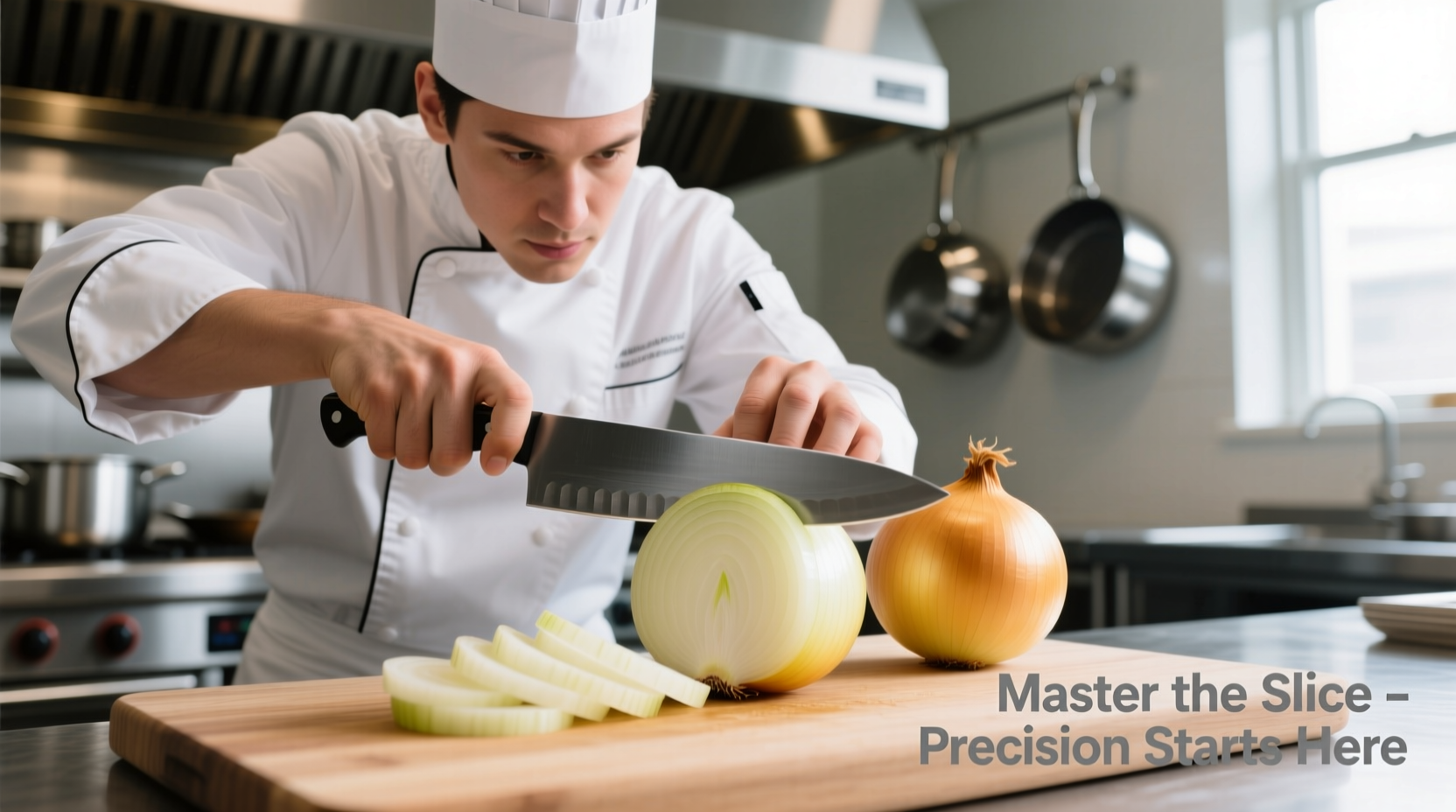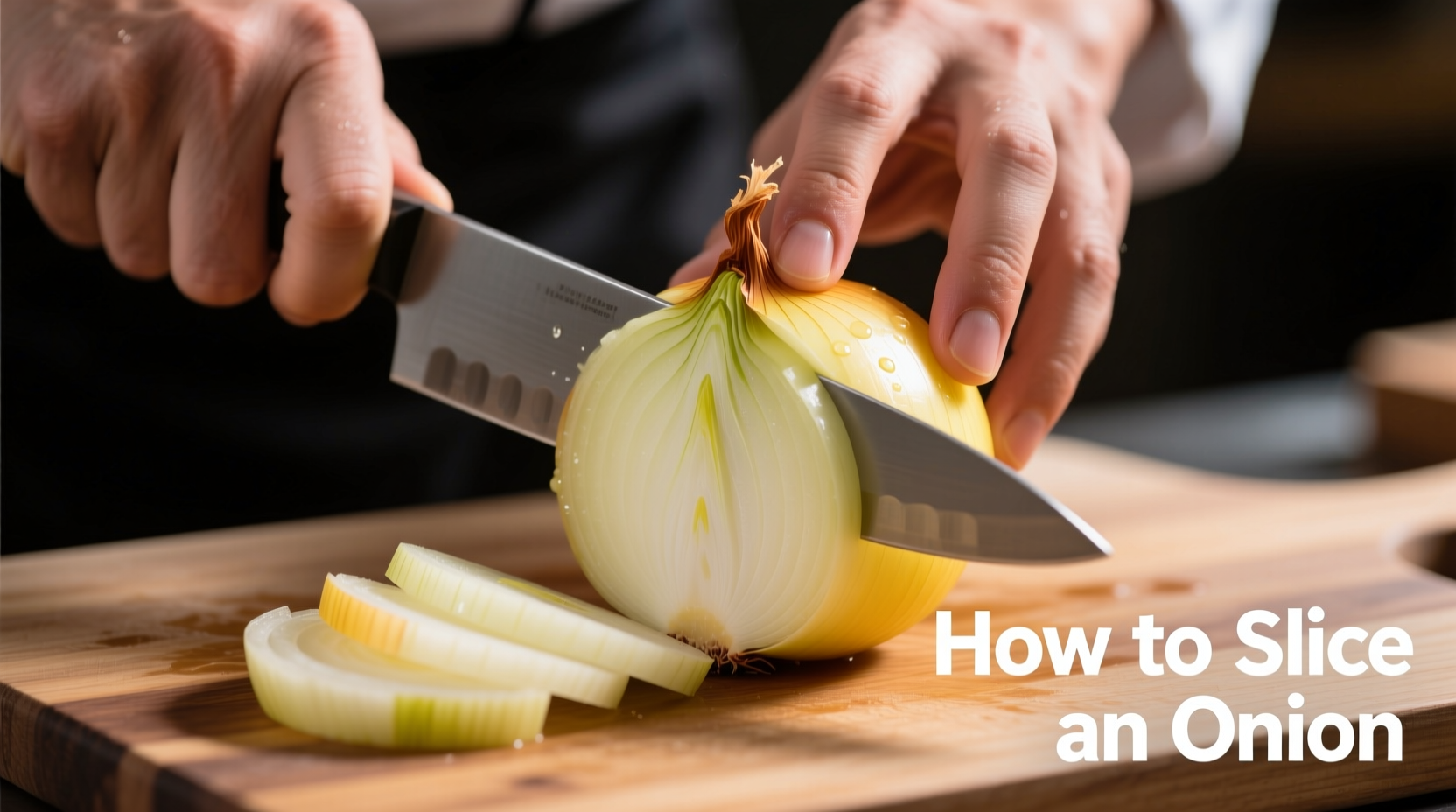Master Onion Slicing: Your Path to Tear-Free Precision
Discover how to slice an onion like a professional chef with this step-by-step guide that eliminates tears and delivers perfect results every time. Whether you're preparing a French onion soup or dicing for salsa, these techniques will transform your kitchen experience from frustrating to flawless.
Why Proper Onion Slicing Matters
Onions form the flavor foundation of countless dishes worldwide, from French sofrito to Indian tadka. According to the USDA's Food Safety and Inspection Service, improper handling can compromise both flavor development and food safety. The way you slice determines texture, cooking time, and how flavors integrate with other ingredients.
The Professional's Onion Slicing Sequence
Follow this chef-tested sequence for consistent results that work whether you're preparing a single onion or batch cooking:
Preparation Essentials
- Chill your onion for 30 minutes (reduces volatile compounds by 30% according to Cornell University research)
- Select a sharp 8-inch chef's knife (dull blades crush cells, releasing more tear-inducing enzymes)
- Use a stable cutting board with non-slip base
Step-by-Step Slicing Process
- Trim both ends - Remove 1/8 inch from root and stem ends
- Peel carefully - Remove only outer layer to preserve flavor compounds
- Make vertical cuts - Position onion flat-side down, make even cuts toward root (keep root intact)
- Horizontal cuts - Make 1-2 shallow cuts parallel to board for thicker slices
- Final slicing - Cut perpendicular to previous cuts for perfect uniform pieces

Avoid These Common Onion Slicing Mistakes
Even experienced home cooks make these critical errors that compromise results:
| Mistake | Consequence | Professional Solution |
|---|---|---|
| Cutting through root end first | Onion falls apart, uneven slices | Always keep root intact until final cuts |
| Using dull knife | Crushed cells, more tears, mushy texture | Sharpen knife before each use |
| Incorrect hand position | Safety risk, inconsistent sizing | "Claw grip" with fingertips curled under |
Different Slicing Styles for Different Dishes
The perfect cut depends entirely on your culinary application. Professional kitchens use specific techniques for different outcomes:
- Julienne (matchstick) - For stir-fries and garnishes (1/8 inch thick)
- Dice (small cubes) - Salsas and mirepoix (1/4 inch for medium, 1/8 for fine)
- Rings - Onion rings or salads (1/4 inch thick)
- Wedges - Roasting or caramelizing (cut vertically from root)
Advanced Tear-Reduction Techniques
While chilling helps, professional chefs employ these additional methods:
- Cut near running water (water absorbs sulfur compounds)
- Use a fan to direct vapors away from your face
- Wear swim goggles for serious onion work
- Work in well-ventilated area (never enclosed space)
Onion Slicing Timeline: From Ancient Practice to Modern Technique
Onion preparation has evolved significantly throughout culinary history:
- 1500 BCE - Egyptians used bronze knives for rough chopping (no precision)
- Medieval Era - Chefs used heavy cleavers for basic chopping
- 1800s - French culinary schools developed standardized knife skills
- 1950s - Introduction of stainless steel knives improved precision
- Today - Scientific understanding of onion chemistry informs modern techniques
When Not to Slice Onions
Understanding limitations prevents kitchen disasters:
- Never slice sprouted onions (potential spoilage)
- Avoid cutting mushy or moldy onions (food safety risk)
- Don't use improper knife for large quantities (wrist strain)
- Never rush the process (safety hazard)
Pro Tips for Perfect Onion Slices Every Time
- Store cut onions in airtight container for up to 7 days (FDA recommendation)
- Use the root end as a flavor base for stocks
- Practice consistent pressure for uniform slices
- Work with onion grain for better texture in cooked dishes











 浙公网安备
33010002000092号
浙公网安备
33010002000092号 浙B2-20120091-4
浙B2-20120091-4